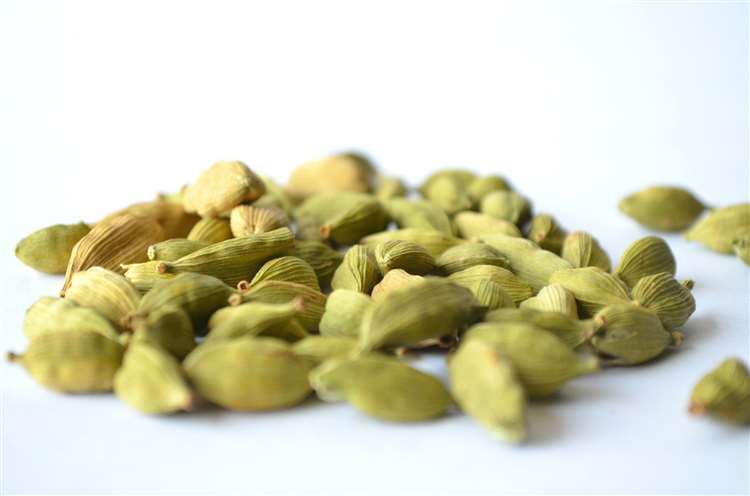Green cardamom is one of the world’s most expensive spices
Posted on November 14th, 2021
Courtesy johnogroat-journal.co.uk

There are two main types of cardamom: green (Elettaria cardamomum) and black (Amomum subulatum). Green cardamom, also known as true cardamom, is a sub-species of the ginger (Zingiberaceae) family. Green cardamom is native to Southern India and Sri Lanka.
The botanical has long, pointed leaves and pretty, white flowers. The seed-containing pods are light green in colour and paper-like in texture. They are about one centimetre long, triangular in cross-section and taper to a point at the end.
The seed pods of green cardamom contain small, black seeds. Green cardamom seeds have a strong, sweet, pungent flavour, with hints of citrus and ginger.
Green cardamom is the third most expensive spice in the world – only saffron and vanilla cost more by weight.
The first written reference to green cardamom comes from the Sumer Civilisation, which evolved within the Tigris-Euphrates valley circa 5000 BC and was the world’s first civilised society. It boasted a highly developed social structure, advances in agriculture, industry and technology, a complex religious system, and the pièce de résistance – a developed writing system.
The Ancient Greeks thought highly of green cardamom, and the Greek physicians Pedanius Dioscorides and Hippocrates of Kos wrote about its medicinal properties, identifying it as an aid to digestion.
Due to demand in Ancient Greece and Rome for this botanical, which was used as a spice in both sweet and savoury dishes, the cardamom trade developed into a luxury business. During the Medieval period, the Republic of Venice became the western world’s principal importer of green cardamom, which it obtained from Oriental merchants along with cinnamon, cloves and pepper in exchange for meat and salt products.
The seeds, oils and extracts of green cardamom are thought to have impressive medicinal properties and have been used in traditional medicine for centuries. The Ancient Greeks and Romans chewed green cardamom seeds or mixed them with other medicinal spices to treat gastrointestinal disorders, food poisoning, nausea, and vomiting.
Green cardamon was also used in Ancient Rome as an aphrodisiac. The use of green cardamom seeds to treat bad breath and improve oral health is also an ancient remedy, which may have to do with the botanical’s ability to kill common mouth bacteria and prevent cavities. This is probably why the chewing gum manufacturer Wrigley uses green cardamom in its Eclipse Breeze Exotic Mint Sugarfree Gum.
The antimicrobial properties found in cardamom essential oil mean that the botanical is also often used in soap manufacture.
Green cardamom is widely employed in Indian, Middle Eastern and Swedish cuisine. In Sweden, green cardamom is used to season everything from baked goods to hamburgers and meatloaves. In Middle Eastern recipes, ground green cardamom is used to flavour desserts.
The botanical can also be found along with cinnamon, cloves and nutmeg in the garam masala spice mixture that seasons meat and vegetable dishes, and in hot beverages such as hot cider, masala chai tea, mulled wine, and Turkish coffee. Green cardamom is used as a major ingredient in curries throughout the Middle East and South-East Asia.
In gin manufacture, during distillation, it is possible to extract the essential oils from within green cardamom seed-containing pods by placing them intact into a still. However, some distillers lightly crack open the seed pods before placing them in the still.
In gin production, green cardamom adds a complex, earthy, grassy and bittersweet aroma to the spirit, along with a citrus sweetness, and hot spicy ginger notes.